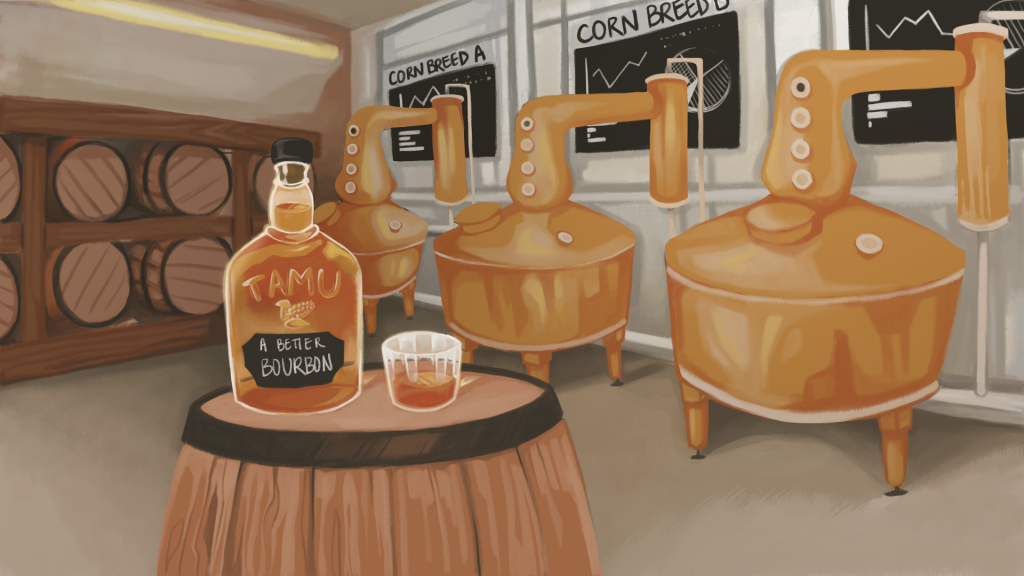Better whiskey through science: Can selection of corn enhance taste?

Seth Murray may have had more than a casual interest in National Bourbon Day on June 14.
A Texas A&M AgriLife Research corn breeder and holder of the Eugene Butler Endowed Chair in the Department of Soil and Crop Sciences, Murray has an ongoing research project aimed at producing better whiskey through science.
Whiskey is the generic name of distilled alcohol made with grain and aged in a wood barrel. Bourbon whiskey must by federal law be produced in the United States from at least 51 percent corn, distilled to less than 80 percent alcohol and barreled at less than 62.5 percent alcohol in new charred oak barrels. Most bourbon whiskey brands use 70-80 percent corn in their recipes.
Murray’s corn breeding program evaluates about 7,000 varieties per year for food and animal feed, but his novel corn-for-whiskey project is attempting to answer the question: Can different corns make whiskey taste different? Better?
He recently conducted a whiskey tasting on Capitol Hill to help educate U.S. legislators on the importance of public agriculture research as a part of the Hill Lunch-N-Learn seminar series sponsored by the National Coalition for Food and Agricultural Research, or C-FAR.
More than 100 Congressional staff members taste-tested three Texas whiskeys as Murray discussed research he and his graduate student, Rob Arnold, are doing regarding the effect corn variety has on flavor.
Arnold is working toward his doctorate in plant breeding through Texas A&M’s distance program while working as the head distiller at Firestone & Robertson Distillery in Fort Worth.
“Rob and I have had a great collaboration,” Murray said. “He was already an amazing distiller and among the world leaders in the science of whiskey, while I run one of a few remaining public corn breeding programs and was looking for more ways to get our improved varieties out and to help farmers and put Texas industries on the map.”
He said with fewer people involved in agriculture all the time, the importance of scientifically breeding new varieties is not well understood by the public.
“This project has allowed me to connect the positive impacts of my agricultural research directly to something many consumers are excited about, better whiskey,” Murray said.
Staffers had the opportunity to taste F&R’s commercially available “TX” Whiskey and TX Bourbon, along with two research samples aged for a year and a half in matched oak barrels. Of the matched samples, one was made from a Texas A&M experimental hybrid grown in Burleson County and the other from a commercial corn variety produced in Hill County.
“The staffers liked the whiskey, but more importantly they thought the flavors of the two matched samples were very distinct,” Murray said. “This is great because it shows that different corn varieties do make a difference.”

